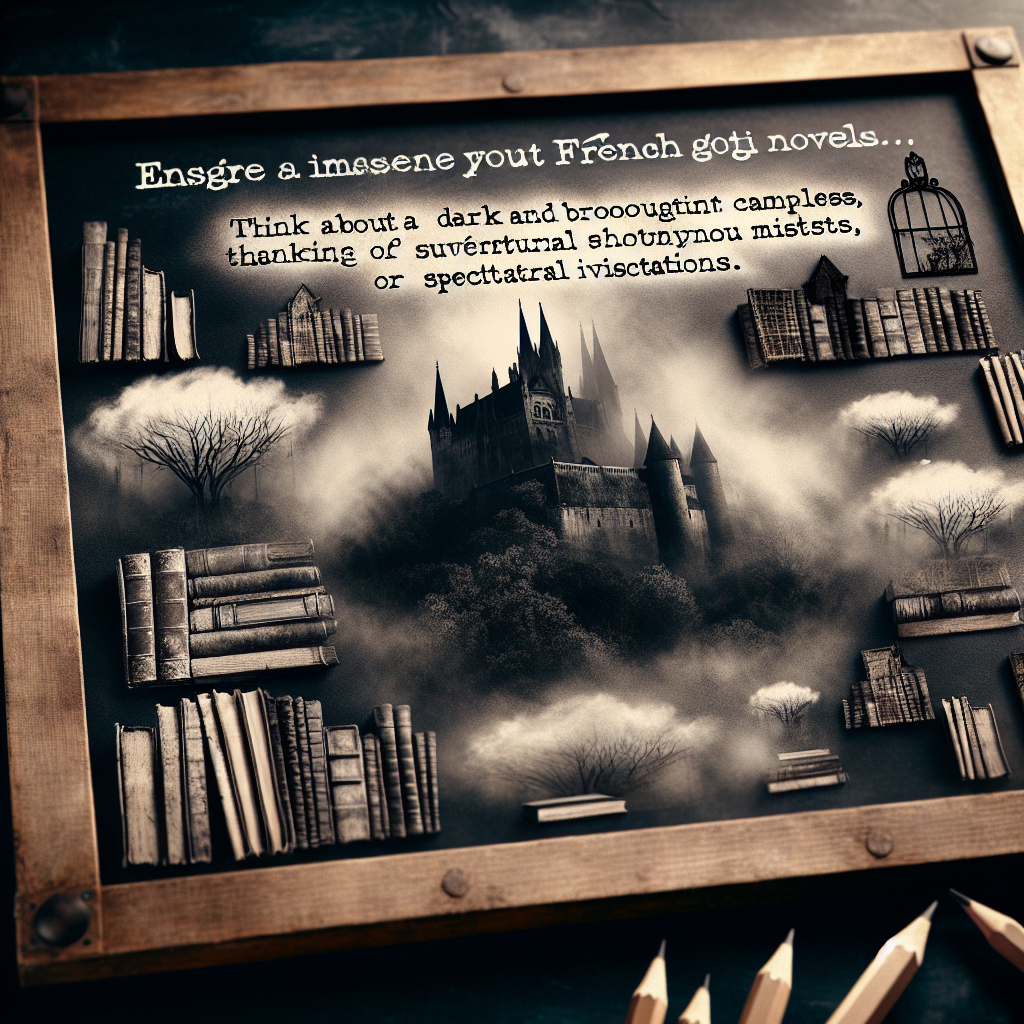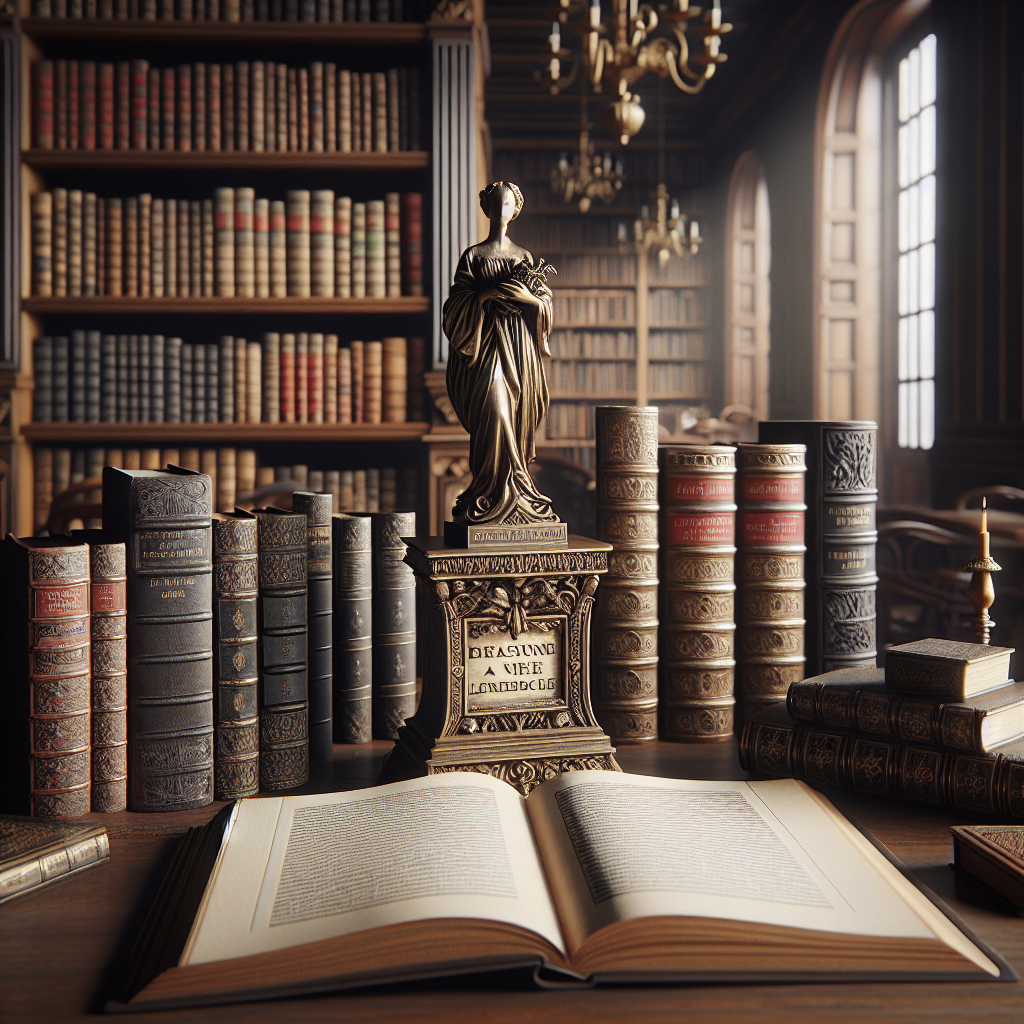Exploring French Gothic Novels
The realm of French Gothic novels is rich and intricate, rooted deeply in the cultural and historical fabric of France. Understanding what defines this genre and the influence of French culture on its development is essential for any reader interested in the thematic and stylistic elements present in these works.
What Defines French Gothic Literature
French Gothic literature is characterized by its dark themes, supernatural elements, and a focus on emotion and psychological depth. Key features of this genre include:
| Feature | Description |
|---|---|
| Atmosphere | A sense of dread or horror that pervades the narrative. |
| Setting | Often takes place in decaying castles, eerie landscapes, or historic ruins. |
| Characters | Typically includes tormented protagonists, mysterious figures, and often a romantic element. |
| Themes | Explores issues of identity, isolation, madness, and the supernatural. |
Notable examples demonstrating these characteristics can be found in prominent works such as “The Hunchback of Notre-Dame” by Victor Hugo. The interplay of history and myth, along with the exploration of human suffering, encapsulates the essence of French Gothic literature.
Influence of French Culture on Gothic Novels
The development of French Gothic novels has been significantly shaped by the cultural landscape of France. From the medieval period through the Renaissance and into the modern era, French societal influences, historical events, and artistic movements have profoundly impacted the genre’s expression.
| Cultural Influence | Effect on Gothic Novels |
|---|---|
| Medieval Tradition | Many Gothic themes draw from medieval folklore and the complexities of chivalric tales. |
| Romanticism | Romanticism heightened emotional depth and the portrayal of the sublime, influencing the portrayal of characters and settings. |
| Historical Events | Events such as the French Revolution brought themes of social upheaval and human struggle into Gothic narratives. |
French literature has continually evolved, and the Gothic genre serves as a reflection of the complexities of French identity and history. For further exploration of the breadth of French literature, consider delving into resources about french literary classics and french literature history.
This exploration of French Gothic novels not only highlights the unique characteristics of the genre but also places them within their broader cultural and historical context, offering a deeper appreciation for their significance in literature.
Top French Gothic Novels
French Gothic literature offers a unique blend of eerie atmospheres, complex characters, and themes of horror and romance. Here are three seminal works that exemplify this genre:
“The Hunchback of Notre-Dame” by Victor Hugo
Published in 1831, “The Hunchback of Notre-Dame” is a monumental work that captures the essence of French Gothic literature. The story revolves around the deformed bell-ringer Quasimodo, the beautiful Esmeralda, and the obsessive archdeacon, Claude Frollo. Set against the backdrop of the iconic Notre-Dame Cathedral, the novel explores themes of love, social injustice, and the struggle between inner and outer beauty.
| Element | Description |
|---|---|
| Author | Victor Hugo |
| Year Published | 1831 |
| Main Themes | Love, Obsession, Injustice |
| Setting | Notre-Dame Cathedral, Paris |
“The Phantom of the Opera” by Gaston Leroux
“The Phantom of the Opera,” first published in 1909, tells the haunting tale of a mysterious figure who lives beneath the Paris Opera House. The story follows Christine Daaé, a talented singer, who becomes the object of affection for both the enigmatic Phantom and Raoul, a nobleman. This novel weaves together themes of unrequited love, obsession, and the duality of human nature, making it a cornerstone of French Gothic fiction.
| Element | Description |
|---|---|
| Author | Gaston Leroux |
| Year Published | 1909 |
| Main Themes | Love, Obsession, Duality |
| Setting | Paris Opera House |
“La Vampire” by Paul Féval
Written in 1844, “La Vampire” is one of the early examples of vampire literature in France. The story revolves around a beautiful vampire named Herminie who leads a double life, captivating men while draining their life force. This novel is notable for its exploration of the supernatural and the darker aspects of human desires, characteristic of Gothic fiction.
| Element | Description |
|---|---|
| Author | Paul Féval |
| Year Published | 1844 |
| Main Themes | Supernatural, Seduction, Duality |
| Setting | France |
These significant works of French Gothic literature not only showcase the genre’s enduring appeal but also reflect the complexities and darker sides of the human experience. For readers seeking to explore more about the world of French literature, consider delving into articles on french literary classics or french literature history.
Lesser-Known Gems
French Gothic novels often contain hidden treasures that are lesser-known yet equally captivating. Here are three notable examples that showcase the depth and intrigue of this genre.
“The Horla” by Guy de Maupassant
“The Horla” is a chilling short story that explores themes of madness and the supernatural. Narrated in the first person, this tale delves into the mind of the protagonist as he grapples with an unseen entity that haunts him. The story reflects the influences of both psychological horror and the Gothic tradition, making it a significant work in French literature.
| Key Element | Description |
|---|---|
| Author | Guy de Maupassant |
| Year Published | 1887 |
| Themes | Madness, Supernatural, Isolation |
“The Woman in White” by Wilkie Collins
Originally published in 1859, “The Woman in White” is a pioneering work of Gothic fiction that blends elements of mystery and thrilling suspense. Although Wilkie Collins is an English author, this novel features strong Gothic themes that resonate with French literature. The story follows the lives of several characters intertwined by a mysterious woman dressed in white, exploring themes of identity and deception.
| Key Element | Description |
|---|---|
| Author | Wilkie Collins |
| Year Published | 1859 |
| Themes | Identity, Deception, Mystery |
“The Werewolf of Paris” by Guy Endore
Published in 1933, “The Werewolf of Paris” employs the Gothic motif of the werewolf while intertwining it with French history. Set during the tumultuous Paris Commune of 1871, the novel follows the transformations of its protagonist, who struggles with his dual identity. This adaptation of the werewolf myth engages with historical context and the human condition, marking its place in French Gothic literature.
| Key Element | Description |
|---|---|
| Author | Guy Endore |
| Year Published | 1933 |
| Themes | Identity, Transformation, History |
These lesser-known gems contribute significantly to the landscape of French Gothic novels, inviting readers into dark, haunting worlds rich with complexity. For a broader view of French literature, consider exploring French literary classics or delving into 20th-century French novels.
Elements of French Gothic Novels
Understanding the elements that comprise French Gothic novels is essential for appreciating their unique charm and depth. This section explores the prevalent themes, motifs, tropes, and character archetypes commonly found in this captivating genre.
Themes and Motifs
French Gothic literature is known for its profound exploration of various themes and motifs that evoke emotions and provoke thought. Some of the most notable themes include:
| Theme | Description |
|---|---|
| Isolation | Characters often grapple with social isolation or self-imposed exile, reflecting on their internal struggles. |
| Madness | The portrayal of mental instability is a common motif, often highlighting the thin line between sanity and insanity. |
| The Supernatural | Elements of the supernatural, such as ghosts and curses, play a significant role in creating tension and atmosphere. |
| Death and Decay | A focus on mortality and the impermanence of life contributes to the ominous tone characteristic of Gothic literature. |
| Forbidden Love | Many narratives explore love that defies societal norms, emphasizing the tragic consequences that can arise. |
Tropes and Characters
Certain tropes and character types are prevalent in French Gothic novels, adding to the genre’s richness. Readers will often encounter:
| Trope | Description |
|---|---|
| The Byronic Hero | A complex character, often brooding and deeply flawed, who embodies both charm and tragedy. |
| The Damsel in Distress | A vulnerable female character in need of rescue, often serving as the emotional center of the story. |
| The Haunted Castle | Settings such as dilapidated castles or abandoned manors create an eerie and suspenseful atmosphere. |
| The Mysterious Stranger | A character whose true intentions are unclear, often complicating the plot and creating intrigue. |
Additionally, familiar characters such as the mad scientist, the tragic hero, and the ghostly figure frequently appear in these narratives. The exploration of these themes and tropes enriches the experience for readers and enhances their understanding of the cultural context surrounding french literature history.
For those interested in further delving into the intricacies of French literature, exploring specific genres like french literary classics, 20th-century french novels, and french historical novels can provide valuable insights into the evolution of literary styles and themes.
Reading French Gothic Novels
Tips for Delving into French Gothic Literature
Exploring French Gothic novels can be an enriching experience. To fully appreciate the depth of these works, readers may consider the following tips:
-
Start with the Classics: Begin with renowned titles like “The Hunchback of Notre-Dame” and “The Phantom of the Opera” to grasp the foundational elements of French Gothic literature.
-
Understand the Context: Familiarize yourself with the historical and cultural background of France during the time these novels were written. This can enhance understanding and appreciation. Refer to the article on french literature history for insights.
-
Focus on Themes: Pay attention to recurrent themes such as isolation, passion, and the supernatural. These elements are core to French Gothic storytelling.
-
Recognize the Style: Note the descriptive language and atmospheric settings. French writers often use detailed imagery to evoke a sense of mystery and intrigue.
-
Join Discussions: Participate in book clubs or online forums where Gothic novels are discussed. Engaging with fellow readers can provide diverse perspectives.
-
Explore Related Genres: Discover works in related genres, such as french romantic literature, to see how Gothic elements blend with other literary styles.
Understanding the Historical Context
Understanding the historical context of French Gothic novels is crucial for a deeper appreciation. Here are some key points:
| Historical Period | Key Features |
|---|---|
| Medieval Era | Rise of castles, chivalry, and tales of the supernatural. |
| Romanticism | Emphasis on emotion, nature, and individualism in the late 18th and early 19th centuries. |
| Industrial Revolution | Contrast between urbanization and rural mystique, inspiring themes of alienation and fear. |
The Gothic genre in France emerged during a time of social and political upheaval, influencing its themes and characters. For those looking to explore this context further, resources on french historical novels may provide additional guidance.
By implementing these tips and understanding the historical backdrop, readers will be better prepared to navigate the captivating world of French Gothic novels.

